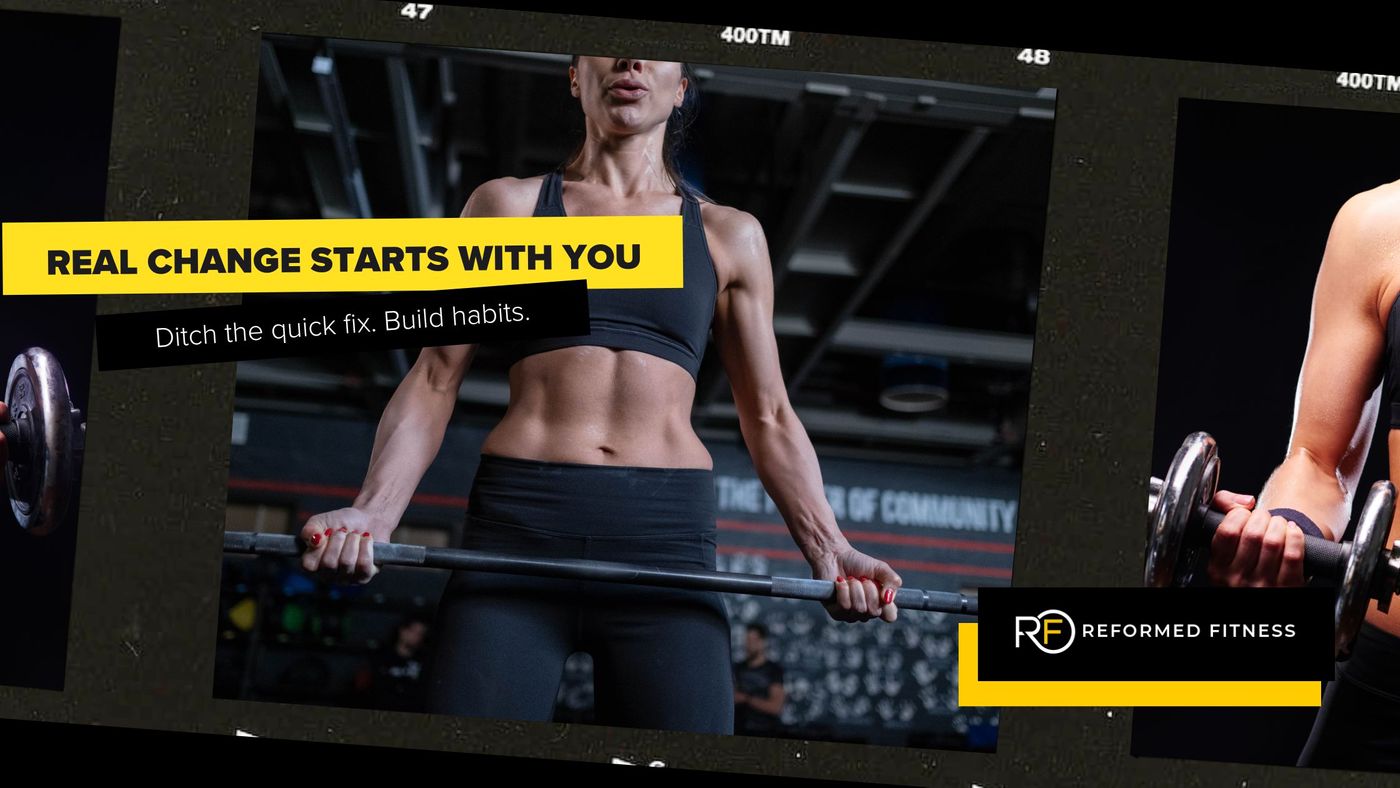You start off strong. A new health routine, a burst of motivation, and the feeling that this time will be different. Maybe it’s sparked by a tough conversation with your doctor. Maybe it’s seeing a photo that catches you off guard. Or maybe it’s just a gut-level realization that something needs to change.
But three weeks later, the workouts are irregular. The meals are less intentional. The old routine creeps back in. And once again, you're left wondering why consistency is so hard to sustain.
This cycle isn’t about willpower. It’s about design. Because lasting change doesn’t come from pressure or perfection—it comes from clarity, consistency, and internal alignment. And it starts by understanding two critical drivers of sustainable health: where your motivation comes from and how you structure your goals.
Why Most Motivation Doesn’t Last
The kind of motivation that fuels real transformation doesn’t come from panic or pressure. It comes from purpose.
When people first begin a health journey, they’re often driven by external motivation—a comment from someone else, a looming event, or a scare from a medical provider. These triggers are powerful, but they fade quickly. And when that external pressure disappears, so does the drive to stick with the routine.
What fuels long-term change is internal motivation—the desire to feel energized again, to be able to move without pain, to age with strength and confidence. When your goals are grounded in what truly matters to you—not just what you think you're supposed to care about—you’re far more likely to follow through.
Research by Deci and Ryan (2000) confirms this: individuals who are intrinsically motivated—driven by internal values rather than external rewards—are more likely to maintain health-related behaviors over time. In other words, people stick with habits that reflect who they want to be, not just what they want to achieve.
Why Outcome Goals Fall Apart (and What to Focus on Instead)
Setting big goals like losing 30 pounds, running a 10K, or lowering your blood pressure can be motivating—but these are outcome goals, and they often leave people stuck. Because outcomes aren't something you directly control.
You can’t force the scale to drop on a given day. You can’t guarantee a lab result by next month. You can influence those results, yes—but the day-to-day actions that drive them? That’s where the real leverage is.
That’s why at Reformed Fitness, we help clients focus on process goals—the specific, repeatable actions that build momentum:
-
Committing to two strength workouts per week
-
Drinking a set amount of water daily
-
Taking a 10-minute walk after lunch
-
Getting to bed at a consistent time
These are small, doable, and grounded in your control. And according to research from Locke and Latham (2002), they’re far more effective at driving performance and long-term behavior change than vague or purely outcome-based goals.
The Identity Shift That Changes Everything
There’s a subtle but important shift that happens when you focus on actions instead of just results. You stop thinking of yourself as someone who’s “trying to get fit,” and start seeing yourself as someone who strength trains twice a week. Who plans meals ahead. Who moves daily.
This identity shift is key. It removes the negotiation from the process. You’re no longer waiting for motivation—you’re acting from a new version of yourself. A study in the British Journal of General Practice (Gardner et al., 2012) found that repeated behaviors rooted in identity become automatic over time—that’s how habits stick.
So What Can You Do Next?
Here’s how to take these ideas and actually apply them this week:
1. Clarify your “why.”
Not the surface-level reason—go deeper. Ask yourself: Why do I want to get stronger, feel better, or be healthier? Keep asking “why” until you find the answer that resonates emotionally. That’s your internal motivator.
2. Set one process goal this week.
Pick a small action that supports your larger health vision and that you can repeat with ease. This might be two strength workouts, prepping your lunches, or simply drinking more water. Don’t pick something overwhelming—pick something sustainable.
3. Start building your new identity.
Instead of saying, “I need to work out,” start saying, “I’m the kind of person who trains consistently.” Language matters. Behavior follows identity.
4. Track the process, not just the outcome.
Get a simple notebook or use your phone. Record the actions you’re taking. Did you work out today? Did you prep meals? This creates visibility and keeps your focus on what you can control.
5. Reassess monthly—not daily.
Change doesn’t show up overnight. But if you commit to a simple process, week after week, the results will follow. Give yourself the time to notice progress in your energy, strength, and consistency—not just on the scale.
At Reformed Fitness, We Keep It Simple and Sustainable
We know your schedule is packed. That’s why our model is designed to meet you where you are: two 30-minute virtual workouts per week, personalized coaching, and realistic habit-building strategies that help you make change stick.
You don’t need more intensity. You need more consistency.
You don’t need motivation. You need a system that works.
If you’re ready to stop starting over—and start building habits that last—schedule your free Discovery Call today.
Let’s help you build a healthier, stronger future—without burning out trying to get there.
References
-
Deci, E. L., & Ryan, R. M. (2000). The “What” and “Why” of Goal Pursuits: Human Needs and the Self-Determination of Behavior. Psychological Inquiry, 11(4), 227-268.
-
Locke, E. A., & Latham, G. P. (2002). Building a Practically Useful Theory of Goal Setting and Task Motivation: A 35-Year Odyssey. American Psychologist, 57(9), 705–717.
-
Gardner, B., Lally, P., & Wardle, J. (2012). Making Health Habitual: The Psychology of Habit-Formation and General Practice. British Journal of General Practice, 62(605), 664-666.
-
Fogg, B. J. (2019). Tiny Habits: The Small Changes That Change Everything. Houghton Mifflin Harcourt.

